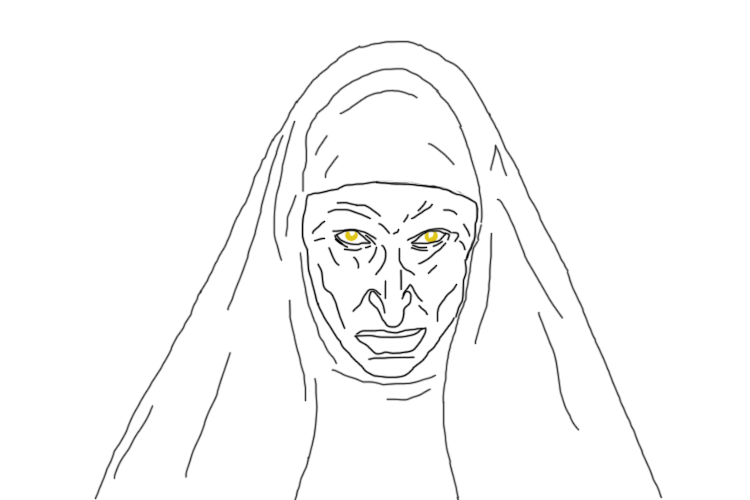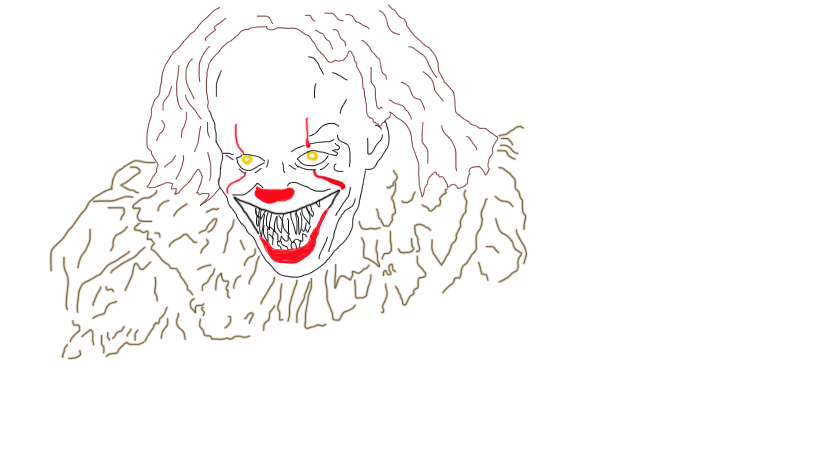The Art Of The Jump Scare
Fear is what you feel when you feel when you know the killer is somewhere in the house, it’s what you feel when you know the monster is right behind the protagonist; it’s what you feel when you’re made to feel tension. Whereas anyone can make an audience jump, creating genuine, palpable tension is difficult. Any halfway-decent sound engineer can add a loud noise and make an audience shriek, but that has very little to do with fear. A loud and abrupt noise is bound to make anyone jump, it’s an innate reaction, it’s also not exclusive to the horror genre. As it pertains to horror, the utilization of empty loud noises and lazy jump scares cheapens the experience.
The most important element of a horror movie, is that it be scary. More important than story, or character development, is a scary movie’s ability to instil terror in an audience. Fear is a powerful and reflexive human emotion, it’s an alert to the presence of threat or harm, whether the danger is physical or psychological. For a horror movie to tap into that response, it has to trick or convince and audience that they’re in actual danger, despite being safely in their seats. We have to be made to believe that something harrowing, or something terrifying is about to happen to a character, or against all odds, is about to happen to us. Scaring an audience takes forethought, ingenuity and effort, startling an audience, however, is something completely different.
The mark of a truly great horror movie is only identifiable once the movie is over. A genuinely scary movie follows you home, it lurks around the corners in your hallway, and behind the door in your bathroom. It’s that fit of anxiety that grips the walls of your stomach as you peel yourself off the couch and try to find the light switch. It tells your brain that the faint shadow in the corner isn’t just an optical illusion, that it’s definitely a psychopath. It’s Michael Myers in the closet, Buffalo Bill in the back alley, or Toni Collette levitating in the upper corner of your bedroom. True fear is indelible.
It’s why horror lends itself to communal viewings, it’s harder to be scared in a crowd of people than it is when you’re alone. Audience members simultaneously enduring breathless tension, is a cohesive experience for everyone involved. There’s something throughly engrossing about being in a theatre and knowing that everyone’s heart is racing, and their palms are as sweaty as yours are. It’s that feeling, when everyone screams in unison, and then laughs right after, knowing ‘they got us.’
Fear requires the audience to buy in. Fear, true fear, is only possible when a scene sets the expectations. A regular scene punctuated by a loud noise, or a musical sting isn’t inherently scary. It’s startling, but it’s not scary. A scene achieves fear when the audience knows the stakes or potential dangers. It’s far scarier to have a character walk around a house if the audience knows the killer is lurking somewhere in the shadows, than it is for a character to walk around the house just for the killer to appear out of nowhere, apropos of nothing. A truly terrifying scene has atmosphere, it creates an eerie palpability that communicates to the audience that something scary is right around the corner. That’s the mark of a scary moment, being able to scare a viewer whose already scared and whose already expecting the hammer to drop.
An exceptionally scary movie is able to weave startling moments in an amongst a greater tapestry of horror. The thread and fabric are always constructing an atmosphere of fear, that will include patches to make you jump.
Halloween (1978)
Why it works…
For starters, we know our soon-to-be victim just had sex, which is a cardinal sin in horror movies. We also know Michael Myers is somewhere in the shadows, waiting to exact revenge on the teens desecrating his house. The knowledge that Myers is lingering in the dark adds to the suspense, we’re aware the kill is coming, and yet when it happens it’s still effective.
Hereditary (2018)
Why it works…
Nothing all that terrifying has happened thus far in the movie, so the audience is overdue for a scare. The scene includes two main characters, so the audience isn’t really expecting either one to die. The stakes are as high as they can be as Peter speeds his little sister, Charlie, to the hospital before her throat closes. It’s a rare scene that perfectly mixes insane tension and two characters assumed to be safe, and yet still, we lose our heads. It’s punctuated by an immediately sobering come down that allows the terror of what we just witnessed to settle.
The Shining (1980
Why it works…
At this point in the movie Jack is fully crazy, trying to hunt down and kill his wife and son. We know he’s lumbering around The Overlook with an axe, and we also know Dick Hallorann has been trekking back to The Overlook in hopes of saving the Wendy and Danny. Horror movies aren’t kind to acts of heroism, and a movie like The Shining doesn’t spend nearly two hours marinating in cold bitterness, only to have the caretaker swoop in, in the final minutes. We expect Dick’s bloody death, yet the scene works because while we know the axe is coming, we don’t know behind which pillar Jack’s hiding.
IT (2017)
Why it works…
The movie goes to great lengths to show us what Pennywise can do. He can be anything, at any anytime, at any place. His ambiguous powers are a benefit to the movie, because there isn’t a scenario they could put him in that wouldn’t make sense. Conversely, the audience is constantly on their toes, awaiting his next appearance. When he shows up on the projector, the tension rises immediately, now we know he’s here. We stop being afraid of when and if he’ll show up, instead we’re left anticipating how scary his arrival will be.
The Conjuring 2 (2016)
Why it works…
This scene establishes the threat early. We see the nun in the hallway, in a terrifyingly muted scene. By the time Lorraine is face to face with the painting of the nun, there’s not much she can do, we already know the nun is present. Given that we know she’s coming, we share in Lorraine’s experience, paralyzed in fear by this forthcoming force of evil. There’s nothing we can do but brace for impact.
It Follows (2014)
Why it works…
By now, we know what It is and why it’s following Jay. We’re expecting something creepy or grotesque behind the door. So, when it’s just Yara in the doorway, our initial anticipation and fear subsides, it’s just a harmless girl… It’s what’s behind her that’s the problem.
Instead of creating outright dread a horror movie will lull you into a state or relaxedness. Movie’s can get away with introducing a sudden fright to subvert an otherwise lackadaisical scene, if the punctuation is actually frightening. An understated scene that gets subverted by tangible terror can be effective. Which is to say, an out-of-nowhere jump scare can work, if we have a reason to be scared of it. We don’t have a reason to be scared of a random loud noise… A demon over someone’s shoulder, however, is a different story.
Alien (1979)
Why it works…
The audience is utterly unprepared for a feral alien to burst out of William Hurt’s chest. It may seem foolish to infer that the “Chestburster” scene is understated, but the first time you watch Alien, you’re not expecting a man’s chest to get torn open. The beauty of the scene is that when the character begins to complain of pain and writhe in agony, there’s a whole host of logical explanations for what might be causing his anguish, yet the movie still manages to blow every expectation out of the water.
The Exorcist III (1990)
Why it works…
The scene spends nearly five minutes descending into banality before it decides to do anything. It takes its time over a single shot as we watch the mundanity of a hospital. The scene does everything it can to tell the audience that they can lower their defences and be at ease. In its final moments it gives us the violent morsel it’s been setting up, a punctuation that introduces a very real threat, worthy of our abrupt fear.
Insidious 2010
Why it works…
It’s just a conversation. Three people sitting around a table, talking about the threat of possession, shot, after shot, after shot. The scene is a perfect example of a well-executed jump scare. When we finally see the evil entity, we’re terrified, not only because of the sudden demon, and not only becuase of the musical sting, we’re terrified because the fear is warranted. The demon behind Patrick Wilson is worthy of our immediate shock and terror, because the demon is scary in itself, it’s a real threat that is scary outside of an unanticipated glimpse.
When we talk about bad jump scares, what we’re really talking about are tactics used by horror movies that lack any substance. These moments are devoid of any “scary integrity.” Spending minutes building suspense and anticipation, only to punctuate that scene with a cat, a loud noise or a random character in a mirror. They aren’t scary, they’re just sort of cheap. Wasting suspense is just neutering a scene so a movie can get a hollow shriek from the audience. If you’re not going to introduce actual terror or threat, you’re misusing the audiences time, and the movie’s atmosphere.
Paranormal Activity (2010)
Why it doesn’t work…
The Paranormal Activity franchise has its entire basis in long methodical scenes upended by loud noises. I guess there’s something inherently scary about a ghost wreaking havoc on a suburban family, but a ghost opening all the cabinets opening simultaneously isn’t the scary part of that scene, the noise is. The blaring cacophony is startling, but other than that the scene isn’t scary. It’s a shock to the ears and not much else.
Prom Night (2008)
Why it doesn’t work…
Why is her mom just standing behind her? How does she not notice? Why does she not hear her mom position herself over her shoulder? Why is her mom just staring at her? Why does her mom not say anything? Why is this scene so moronically manufactured for a mirror scare when there’s no reason, logic nor sense to it at all?
Friday the 13th Part II (1981)
Why it doesn’t work…
Yes, the end of the scene is ultimately punctuated by Jason killing Alice, but the scene completely wastes its initial build up. It spends minutes teasing a killer stalking towards our protagonist, only to surprise the audience with a harmless cat. The scene includes a decapitated head and an homicidal maniac, yet the movie opts for the cat for its first big scare.
The only way to make a movie indelible is to make the universe within the film so incredible, it leaps off the screen and stays with the viewer. It remains with them. A loud noise will always stay in the theatre, story and terror stays with you long after you’ve gone home. The mark of a scary movie isn’t how many times the audience screams, but how disturbed they are by the time the credits roll. The world is a scary place already, but a truly scary movie can momentarily supplant the fears of the real world, with the horrors it displays on screen. It stays in your head, chills your bones and lives in the shadows, and even though you know it’s there, its horror remains inescapable.















